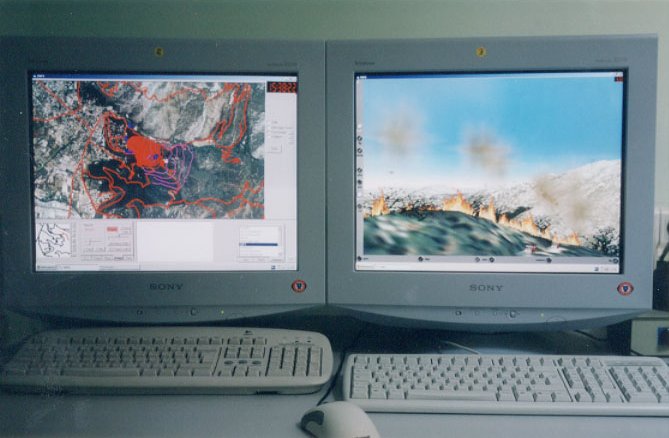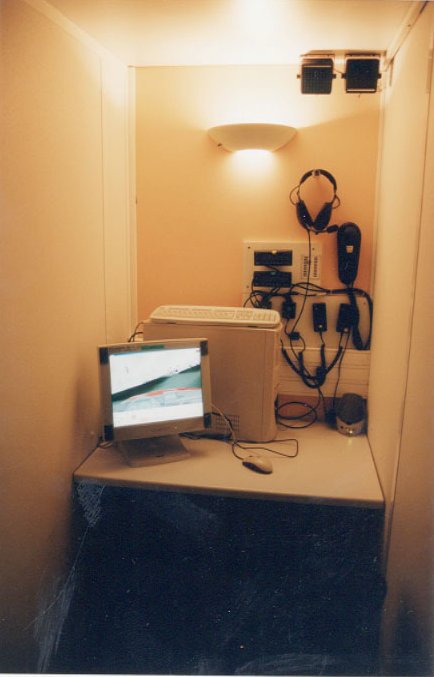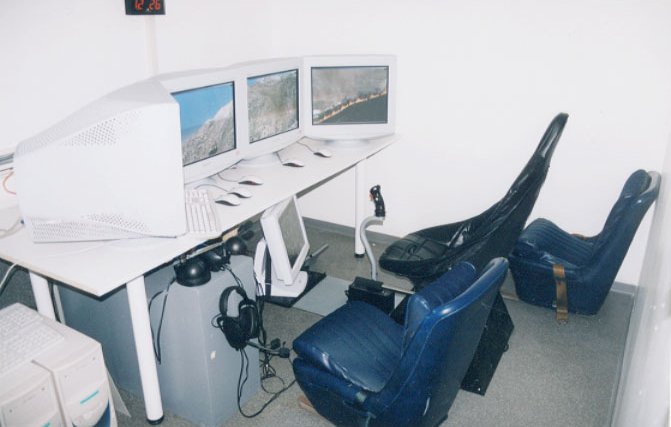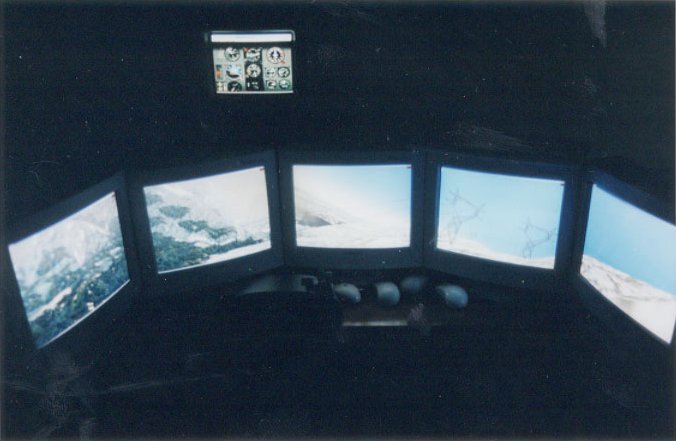
site optimisé pour 1024*768
A Collaborative Forest Fire Fighting Simulation Tool
Part V : INSTALLATION ...
You'll find here some shots of the working booths used by the students ... to give an idea of the environment ....
First, 'God's' working place.
The 'master of game' aka DIREX uses two screens, on the left, a dynamic 2D, map style representation of what's happening in the simulation.
Map reflects roads over a raster background. Raster background can be an aerial imagery (shows plainly real wooden areas and 'real stuff' or a more concise and classical topographic map (easier reading at low zoom level). Elevation contours can displayed if necessary, as well as 2D measurement grids.
On top of the map, some dynamic information is displayed : Fire progress, burned area, vehicules, actions, ...
. Of course, it's possible to pan, zoom, take screenshots for debriefing, trigger events, start new fires, run automated objects/vehicules (trains, animals, human representations, etc ...), induce 'problems' like motor breakdown (even for planes ...) ..., as well as taking control of vehicules (to put a lost fireman in front of his duty again for example) or managing logistics stock (acceding to a demand of fire planes or water truck or not for example).
Right screen is a 'classical' supervisor application. Here, the view is 3D, and the user can freely move, use pre defined viewpoints, or may 'embark' with any other user : 'God' is able to see exactly what a student is looking at ...
'God' monitors every radio traffic too, defines meteo (wind direction and speed), time of day , etc ...

Of course, this is a place of choice (as a lurker ;)...)... and most of the pedagogic staff comes, comments, ask for helping students or inducing complex situations to manage. Well that's the place where the coffee is always at hand. A usual simulation may run from half an hour, to a whole day.
A Ground Operated Vehicule :
From such a booth, a student drives a car, followed (automatically) or not by fighting vehicules (trucks).

The interface is much simpler, note the radio set and ambience speakers. A student embarks with a real paper map (a standard one since the roads are 'real'), and wait for a fire to be signalled on his radio. Then, depending on his vehicule(s), role (air/ground coordinator, ground coordinator, fire fighter, etc ...), he does what it would do in real life, let say going to the fire in a coordinated way, or reach a high point to whatch and coordinate, explore, ask for more men/vehicules/logistics/planes or wait to be called, or any appropriate action he thinks he ought to do.
Fire heat or missed fire planes drops aren't simulated yet in the booths ;)
Flying :


Here are two flying sim booths (helicopter and plane).Note the radio sets, flying gear, control panels and displays.
Those are very noisy booths, because of the engines ...
There may be other students accessing to the helicopter (for an evacuation for example). In this case, the student has to walk to the flying booth ... we couldn't simulate this one. But still, the helicopter already has embarked plenty 'wounded or burned' students and saved them from a sure death ...